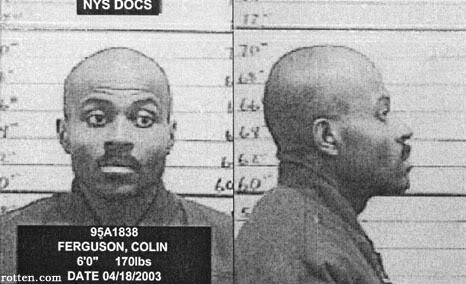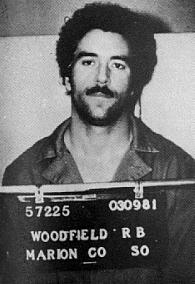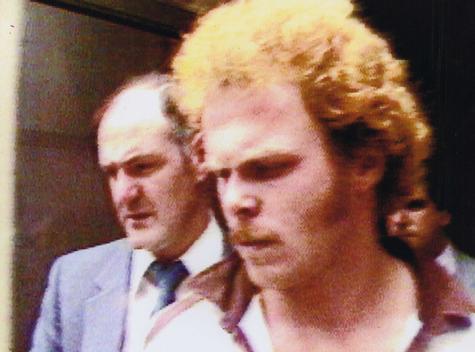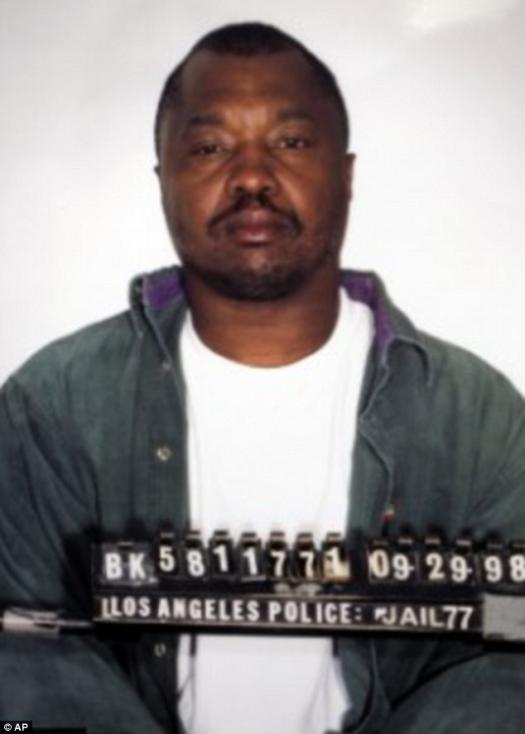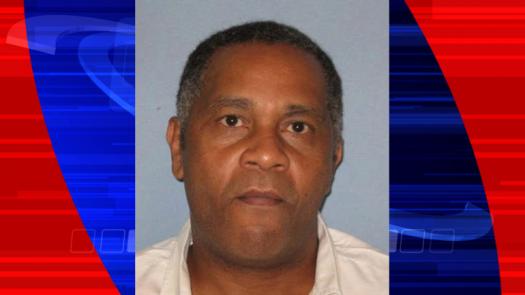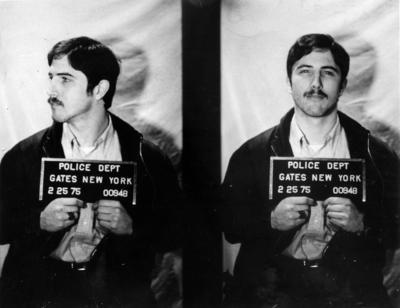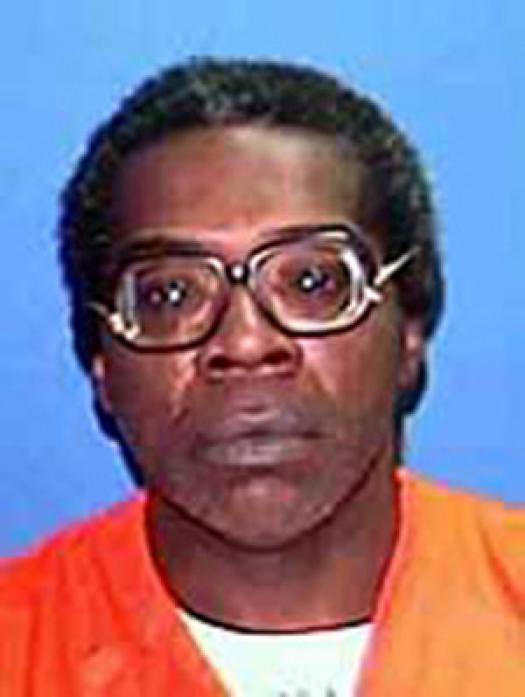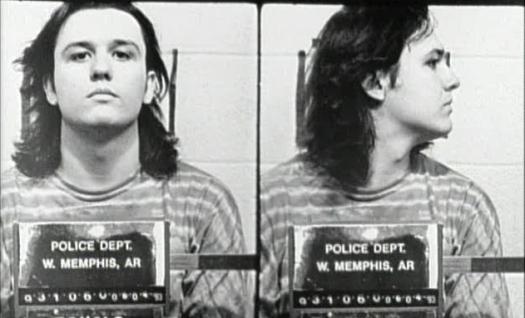Innocent Or Guilty?

Sometimes jurors judge a person based on their looks. The phrases don’t judge a book by its cover is known all over, warning that people aren’t who they seem to be. Why don’t you give this quiz a try and see how well you can judge a person based on their appearance.
- 1.
Take a close look at the following pictures. All of the following individuals were charged with murder, all were convicted. However, some of these individuals were later exonerated and some of them are guilty beyond reasonable doubt. This may not seem related to horror, but very often true crime captures the attention of a wide (horrified) audience. To deal with this fear, it is somewhat common to think that a murderer will look crazed or unsettling. That way, people can feel as though they can better protect themselves by avoiding people who they think look like murderers. Appearances play a surprising role in determining whether a jury will convict a defendant or not. This quiz is your opportunity to see how well you can judge someone based on how they look. Though appearances were not the sole factor in determining guilt in any of these cases, looks do tend to influence how a jury will react to evidence presented during the trial.As you view the pictures, try to do your best to determine who is guilty and who is not guilty. Write down your score so we can all discuss our scores on Blackboard. Your score on this quiz does not count towards your grade, it is just an exercise, so please do not cheat. Also, try to take note at the end of the quiz which people you convicted and which people you did not, and whether your answer was correct.
- A.
Guilty
- B.
Not Guilty
Correct Answer
A. GuiltyExplanation
The man shown is serial killer Gary Ridgway, also known as "The Green River Killer." He was tried and convicted of 48 murders, and confessed to additional ones. Ridgway is guilty beyond reasonable doubt.Rate this question:
-
- 2.
How would you rule if you presided over this man's case?
- A.
Guilty
- B.
Not Guilty
Correct Answer
A. GuiltyExplanation
The man above, Colin Ferguson, was rightfully convicted of six murders and 19 attempted murders after he committed a mass shooting on the Long Island Rail Road.Rate this question:
-
- 3.
How would you rule if you presided over this man's case?
- A.
Guilty
- B.
Not Guilty
Correct Answer
A. GuiltyExplanation
The man pictured is Randall Woodfield, also known as the "I-5 Killer." It may interest you to know that he was drafted by the Green Bay Packers in 1974, but was cut soon after. Woodfield was rightfully convicted of 3 murders and is suspected of being involved in many more.Rate this question:
-
- 4.
How would you rule if you presided over this man's case?
- A.
Guilty
- B.
Not Guilty
Correct Answer
B. Not GuiltyExplanation
The above is Cameron Todd Willingham. In 1991, Willingham was convicted of starting the fire that killed his three children. Willingham was executed by the state of Texas in 2004. The prosecution used bizarre "evidence" to prove to the jury that Willingham was a sociopath, including stating that his tattoo of a skull and snake was fit the profile of a sociopath, and that his Led Zeppelin poster was an indicator of occult activities. Since then, there have been multiple investigations into the evidence presented against Willingham...including an investigation by Gerald Hurst, a chemist known for his work investigating various arson crimes. Hurst stated that there was nothing to suggest Willingham started the fire that killed his children, and the innocence project has Willingham featured on their website as an innocent man that was wrongfully put to death.Rate this question:
-
- 5.
How would you rule if you presided over this woman's case?
- A.
Guilty
- B.
Not Guilty
Correct Answer
A. GuiltyExplanation
Pictured is Susan Smith, a woman rightfully convicted of drowning her two sons in 1995.Rate this question:
-
- 6.
How would you rule if you presided over this woman's case?
- A.
Guilty
- B.
Not Guilty
Correct Answer
B. Not GuiltyExplanation
Pictured is Debra Milke. Debra was convicted of murdering her son in 1990, in the state of Arizona. She was sentenced to death. In 2013, the U.S. Court of Appeals overturned Milke's conviction, stating that she had been given an unfair trial. Among other rights violations, the police officer who testified that Milke confessed to the crime had not recorded the supposed confession, and he was shown to have lied under oath on numerous occasions. That supposed confession was the only "evidence" that linked Milke to the crime; she was wrongfully convicted.Rate this question:
-
- 7.
How would you rule if you presided over this man's case?
- A.
Guilty
- B.
Not Guilty
Correct Answer
B. Not GuiltyExplanation
Above is Randall Dale Adams. Some of you may recognize him from the documentary The Thin Blue Line. Adams was wrongfully convicted of the 1976 murder of a Texas police officer. He was sentenced to death initially, but that sentence was commuted to life in prison before his conviction was overturned. Randall Adams spent over 12 years in jail for a crime that he did not commit. There were several eyewitnesses that placed him at the crime scene and he was convicted based on the strength of their testimony; it later came to light that those eyewitnesses were mistaken.Rate this question:
-
- 8.
How would you rule if you presided over this man's case?
- A.
Guilty
- B.
Not Guilty
Correct Answer
B. Not GuiltyExplanation
The man pictured is Kirk Bloodsworth, a former marine who was tried and convicted of the 1984 murder of a nine year old whose body was found in the woods, sexually assaulted, beaten and strangled to death. Five eyewitnesses claimed that they saw Bloodsworth either with the young girl, or at the crime scene, which aided in his conviction. Bloodsworth spent about nine years in jail, facing the death penalty during some of that time. He was proven innocent during the early 1990s due to DNA testing.Rate this question:
-
- 9.
How would you rule if you presided over this man's case?
- A.
Guilty
- B.
Not Guilty
Correct Answer
A. GuiltyExplanation
This picture shows Lonnie Franklin Jr., a man also known as "The Grim Sleeper." Lonnie is the only person in this quiz that has not yet been convicted. He is currently on trial for murdering 10 women, but is suspected of possibly murdering well over 100 victims since 1985. Though Lonnie has not yet been convicted, there is an overwhelming amount of evidence that suggests he is a serial murderer. You can see some of that evidence, as well as the story of his victims, in a documentary called "Tales of the Grim Sleeper" on HBORate this question:
-
- 10.
How would you rule if you presided over this man's case?
- A.
Guilty
- B.
Not Guilty
Correct Answer
B. Not GuiltyExplanation
This is Damon Thibodeaux. Thibodeaux was tried, convicted, and sentenced to death for the murder of his cousin. Police elicited a false confession from him, and despite the many inconsistencies between his "confession" and the chain of events that was determined by evidence, Thidobeaux was still convicted. He spent 15 years on death row and in solitary confinement until DNA evidence exonerated him.
About 1/4 of all wrongful convictions that are overturned involve a false confessions. The confessions are obtained through a variety of questionable interrogation methods which include sleep deprivation, threats, asking leading questions, and presenting false evidence that makes the suspect doubt his or her own memory.Rate this question:
-
- 11.
How would you rule if you presided over this man's case?
- A.
Guilty
- B.
Not Guilty
Correct Answer
B. Not GuiltyExplanation
This is Anthony Ray Hinton. Hinton was convicted of two murders, and spent close to 30 years on death row, with some of that time being spent in solitary confinement. In 2015, Hinton was finally exonerated when new tests that compared a crime scene bullet to Hinton's found that they did not match.Rate this question:
-
- 12.
How would you rule if you presided over this man's case?
- A.
Guilty
- B.
Not Guilty
Correct Answer
A. GuiltyExplanation
Pictured here is Jeffrey Dahmer, a serial killer we will read about later in the semester. Dahmer was charged and rightfully convicted of the murder, rape, and dismemberment of 17 men of varying ages. During that time, he claims to have conducted various experiments on the victims, including injecting acid into their skulls. Dahmer operated from 1978-1991 and was able to escape a few close calls with the police by talking his way out of the situations. For instance, when one of his victims, a teenager, escaped and ran naked down the street, Dahmer was able to convince the police that they had just had a lovers' quarrel and the police let him take the boy home.Rate this question:
-
- 13.
How would you rule if you presided over this man's case?
- A.
Guilty
- B.
Not Guilty
Correct Answer
B. Not GuiltyExplanation
George Stinney Jr. was a 14 year old South Carolina native who was convicted of the murder of two young white girls in 1944. Stinney confessed to the murder and was convicted based upon that confession. We now know Stinney was almost certainly not guilty of the crime and racism likely played a role in his conviction. He was executed via electric chair that same year, though there is no record of his trial. In 2014, Stinney's conviction was overturned posthumously, with a judge determining that Stinney had not been given a fair trial; his lawyer had not argued in his defense and there was no record of Stinney's confession-there was only the word of the interrogating police officers that testified to his confession.Rate this question:
-
- 14.
How would you rule if you presided over this man's case?
- A.
Guilty
- B.
Not Guilty
Correct Answer
B. Not GuiltyExplanation
Francisco Carrillo was convicted of murder in 1991, based on claims from 6 eyewitnesses. Carrillo spent 20 years in prison before finally having his conviction overturned. The same eyewitnesses that helped get Carrillo convicted eventually admitted that they had never seen the murderer, and had been pressured by police officers to identify and testify against Carrillo.Rate this question:
-
- 15.
How would you rule if you presided over this man's case?
- A.
Guilty
- B.
Not Guilty
Correct Answer
A. GuiltyExplanation
Lee Malvo was rightfully convicted of murder in 2003. Malvo was one of the "Beltway Snipers," along with John Allen Muhammad. The two shot numerous victims over the span of three weeks; the famously hid in the trunk of a car and shot at their victims from the trunk to avoid detection. In the end, they killed 16 people and injured several more.Rate this question:
-
- 16.
How would you rule if you presided over this man's case?
- A.
Guilty
- B.
Not Guilty
Correct Answer
A. GuiltyExplanation
Pictured is Richard Ramirez, a serial killer and rapist that is also known as "The Night Stalker." In 1989, Ramirez was rightfully convicted of 13 murder charges and several attempted murder charges. His MO was typically to break into a home, burglarize and rape women that lived in those homes, and then kill his victims using a variety of methods, including shooting them and beating them to death with his own fists. Ramirez is one of the few murderers that claimed to worship Satan, adding to the Satanic Panic.Rate this question:
-
- 17.
How would you rule if you presided over this man's case?
- A.
Guilty
- B.
Not Guilty
Correct Answer
A. GuiltyExplanation
The man in this photo is Kenneth Bianchi, the man rightfully convicted of being "The Hillside Strangler" in 1983. In a four month period between 1977 and 1978, Bianchi, along with his cousin, raped, tortured, and killed approximately 10 women.Rate this question:
-
- 18.
How would you rule if you presided over this man's case?
- A.
Guilty
- B.
Not Guilty
Correct Answer
B. Not GuiltyExplanation
Pictured here is Frank Lee Smith. Smith was wrongfully convicted of the rape and murder of a young girl in 1986. Three eyewitnesses, including neighbors and the victim's mother, testified against Smith, saying that he was the man they saw escaping the victim's house that night. The prosecution relied upon their testimony, as well as Smith's past criminal history, to get a conviction. Unfortunately, Smith died in jail (from cancer) after spending fourteen years on death row; less than a year later, DNA evidence proved that Smith was not involved in the crime.Rate this question:
-
- 19.
How would you rule if you presided over this man's case?
- A.
Guilty
- B.
Not Guilty
Correct Answer
B. Not GuiltyExplanation
Above is Damien Echols, known for being one of the "West Memphis Three." Three eight year old boys went missing in 1993; their bodies were found about 24 hours after they were reported missing. Damien Echols and two of his friends (all teenagers at the time) were arrested and tried for murder. The prosecution argued that the three boys were killed during a Satanic ritual, and they believe Echols (and his friends) were responsible for the crime because he had an interest in the occult. Echols was sentenced to death for murder (his two friends received guilty verdicts as well, but they got lighter sentences). After the three were convicted, bite marks taken from one of the victims were tested and showed no match to Echols or his friends. In 2007, DNA testing revealed that DNA evidence taken from the crime scene did not match Echols or either of his friends. Further, there were many more developments that suggested Echols and his friends had received unfair trials and were wrongly convicted, including a witness (who testified against the teenagers at the original hearing) that recanted, asserting that she had been coerced by police into making those statements. In 2011, the three were released as part of an unusual plea deal after serving over 18 years in prison; however, they were never officially exonerated or pardoned. Damien Echols is widely regarded to have been a victim of the Satanic Panic that lost 18 years of his life for a crime he did not commit.Rate this question:
-
- 20.
How would you rule if you presided over this woman's case?
- A.
Guilty
- B.
Not Guilty
Correct Answer
B. Not GuiltyExplanation
This is Susan Mellen; she spent 17 years in prison after being wrongfully convicted of murdering a 30 year old man in 1998. Mellen was prosecuted based on the false testimony of a woman named June Patti.Rate this question:
-
Quiz Review Timeline +
Our quizzes are rigorously reviewed, monitored and continuously updated by our expert board to maintain accuracy, relevance, and timeliness.
-
Current Version
-
Mar 22, 2023Quiz Edited by
ProProfs Editorial Team -
Jan 25, 2016Quiz Created by
Prof_odonnell
 Back to top
Back to top




